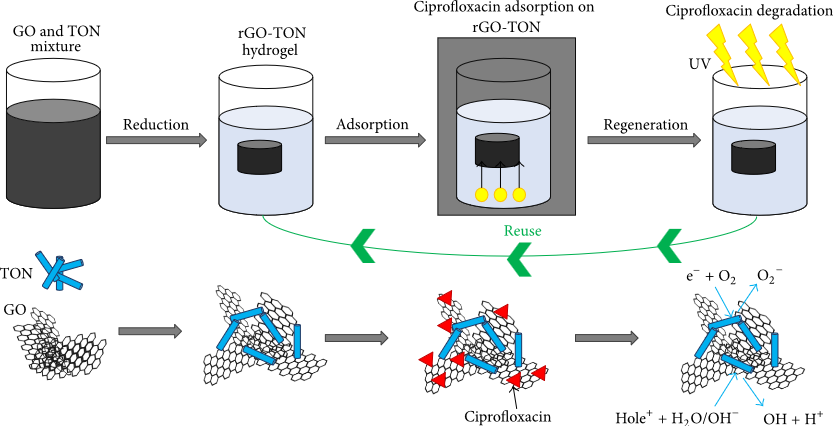ABSTRACT: To improve theH adsorption performance and regeneration ability of adsorbent, a simple method was designed to synthesize long TiO2 nanotube/reduced graphene oxide (rGO-TON) hydrogel, which has good adsorption and regeneration capacity toward ciprofloxacin.rGO-TON hydrogel could form 3D structure, which makes the separation and regeneration of adsorbent easy.For comparison, commercial P25 particle is used to prepare composite hydrogel with rGO; the results showed that TiO2 nanotube supports the graphene sheets better than P25 particles,which would reduce the agglomeration of graphene sheets.rGO-TON have larger specific surface area (138.2m2/g) than rGO-P25 (79.4m2/g). In this paper, ciprofloxacin was chosen as target pollutants, the rGO-TON obtain excellent adsorption capacity, and the maximum adsorption capacities of rGO-TON for ciprofloxacin calculated from Langmuir model are178.6mg/g (��2 = 0.9929), 181.8mg/g (��2 = 0.9954), and 108.7mg/g (��2 = 0.9964) for graphene oxide (GO), GO-TON, and GO-P25, respectively. Inregeneration, the adsorption capacity of rGO-TON and rGO-P25 has little reduced after 5cycles, while the adsorption capacity of rGO decreases to below 100mg/g. Results of this work are of great significance for environmental applications of regenerable long TiO2 nanotube/graphene oxide hydrogel as a promising adsorbent nanomaterial forantibioticpollutantsfromaqueoussolutions.
